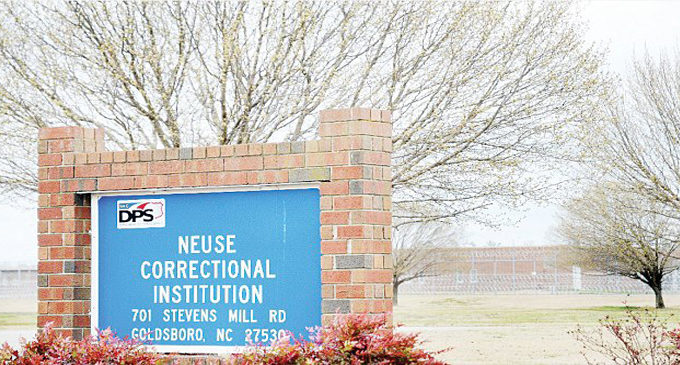N.C. prisons running out of people willing to be vaccinated

By Jordan Wilkie, Carolina Public Press
A year after the more than 460-case outbreak at Neuse Correctional Institution in Goldsboro became one of the biggest hot spots for COVID-19 at the time, the N.C. Department of Public Safety (DPS) is reporting only 18 active cases of the disease across all 55 state prisons, in addition to 139 staff members who are currently off the job for testing positive or being exposed to an active case.
Since the pandemic began, more than 10,000 confirmed cases have occurred among people incarcerated in North Carolina state prisons and another 3,828 cases among staff. Since January, about half of the more than 42,000 people who live or work in the state’s prisons have received at least one dose of the vaccine.
Now, DPS is reducing vaccines and slowing the rate at which it is vaccinating its staff and people in prison. The reason, prison spokesperson Brad Deen said, is that after vaccinating almost 22,400 people, fewer incarcerated people or prison staff are left who want to be vaccinated.
Over two weeks, starting April 5, DPS accepted only 1,500 first doses of the Moderna vaccine the state Department of Health and Human Services offered, half of what DPS received every week since late March. Prisons continue to distribute 3,000 second doses of the vaccine each week. The slowdown in vaccinations could hurt people in the prison system by delaying a return to more normal operations, which both prison staff and incarcerated people have said they want, or by putting staff and incarcerated people at risk of illness if they return too quickly.
If the goal is to limit potential outbreaks, using vaccines to reach herd immunity, or “community immunity,” the point at which enough people in a group are immune to a disease that its spread is limited, could help. But a 50% vaccination rate in the prisons is likely too low for that, according to Dr. Chris Beyrer, public health and human rights professor at Johns Hopkins University.
“Vaccines have multiple roles. One is to protect the individual. The second is to really have a role in reducing transmission and that probably isn’t high enough to really achieve the kind of public health protections we want to see where we really reduce transmission overall.”
“The most important thing is going to be able to communicate with their family members,” said Sandra Hardee, executive director of the advocacy group NC-CURE. “Not having visitation privileges, and having them be so limited during this pandemic, has been really hard on these men and women.”
But restrictions will not fully ease, and the risk of outbreaks will continue, until more people are vaccinated, according to both DPS policy and the opinions of experts like Beyrer.
To date, 6,500 prison staff members are partially vaccinated, which is just under 50% of the workforce. DPS is not tracking data on which staff members are getting vaccinated, according to Deen, so it is not clear what the vaccination rates are for the medical staff or corrections officers who actually work face-to-face with incarcerated people, as opposed to administrators and other staff who may have a more removed role.
Now, DPS is running out of other volunteers to take the shot due to hesitancy among both incarcerated people and prison staff, which follows similar trends in other prison systems. Not vaccinating is a risky decision and one that affects others, because people who vaccinate also make the people around them safer.
In a December interview with The New York Times, Dr. Anthony Fauci, the chief medical adviser to both Presidents Donald Trump and Joe Biden, said he estimates achieving community immunity will take close to 90% immunity across the population, significantly higher than what many public health experts had previously estimated.
At the current pace of vaccination of 800 first doses per week, it would take another seven months for N.C. prisons to reach 90% vaccination rates, assuming enough people would volunteer to take the vaccine and the population remained the same. Thousands of people are booked into and released from prison each month.
Even though Beyrer thinks 50% vaccination is not enough, he also said many activities like family visitation could likely resume safely, given continued safety measures like mask wearing, three-foot social distancing and proper hygiene. Other medical experts also say visitors should be vaccinated or test negative for COVID-19 within 48 hours of arriving at the prison.
As prisons bring in new staff and newly incarcerated people, DPS should strongly encourage them to get vaccinated, Beyrer said, even if the department cannot mandate it. The more people there are without immunity, the more they put themselves, and everyone around them, at risk.











